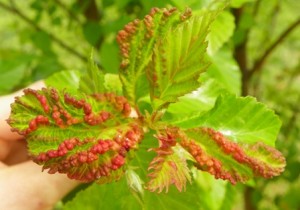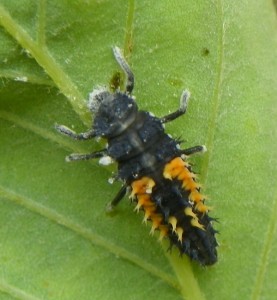What Is Wrong With My River Birch?
go.ncsu.edu/readext?217911
en Español / em Português
El inglés es el idioma de control de esta página. En la medida en que haya algún conflicto entre la traducción al inglés y la traducción, el inglés prevalece.
Al hacer clic en el enlace de traducción se activa un servicio de traducción gratuito para convertir la página al español. Al igual que con cualquier traducción por Internet, la conversión no es sensible al contexto y puede que no traduzca el texto en su significado original. NC State Extension no garantiza la exactitud del texto traducido. Por favor, tenga en cuenta que algunas aplicaciones y/o servicios pueden no funcionar como se espera cuando se traducen.
Português
Inglês é o idioma de controle desta página. Na medida que haja algum conflito entre o texto original em Inglês e a tradução, o Inglês prevalece.
Ao clicar no link de tradução, um serviço gratuito de tradução será ativado para converter a página para o Português. Como em qualquer tradução pela internet, a conversão não é sensivel ao contexto e pode não ocorrer a tradução para o significado orginal. O serviço de Extensão da Carolina do Norte (NC State Extension) não garante a exatidão do texto traduzido. Por favor, observe que algumas funções ou serviços podem não funcionar como esperado após a tradução.
English
English is the controlling language of this page. To the extent there is any conflict between the English text and the translation, English controls.
Clicking on the translation link activates a free translation service to convert the page to Spanish. As with any Internet translation, the conversion is not context-sensitive and may not translate the text to its original meaning. NC State Extension does not guarantee the accuracy of the translated text. Please note that some applications and/or services may not function as expected when translated.
Collapse ▲River birch is a tough and adaptable native tree that is also a popular landscape plant throughout the south. If you notice some of the leaves on your river birch have become thickened, distorted, or discolored in the last few weeks don’t be alarmed. While caused by a type of aphid, these symptoms are not a sign of serious damage and can even be an indication of good things to come to your yard.
UNDERSTANDING APHIDS
A common spring pest, aphids are small soft bodied insects sometimes referred to as plant lice. Size wise, most aphids are little larger than a grain of rice. There are many different kinds of aphid and while most are green, you may find species that are yellow, orange, brown, red, or black, as well as covered in white wooly fluff. Like many pests, most aphid species are adapted to feed on a narrow range of plants and will not spread to everything in your yard.
Aphids feed on plant sap with straw like mouth parts. On ornamental plants, their feeding can cause leaves and stems to become twisted or distorted, but rarely leads to serious damage. As they feed aphids secrete honeydew, a sticky sweet substance that can attract ants and wasps. Black sooty mold, a harmless fungus, often grows on the honeydew, causing aphid infested plants to appear dirty or sooty. Black sooty mold does not damage plants and can be washed off with water or horticultural oil.
The specific type of aphid that feeds on river birch foliage is known as the spiny witch-hazel gall aphid. In the spring this aphid feeds on river birch leaves. In early summer it moves on to witch hazel foliage, but will not infest any other plant. When spiny witch-hazel gall aphids feed on river birch the leaves become crinkled and discolored, with pink corrugated ridges. If you look on the underside of affected leaves you will see the aphids tucked into the ridges.
River birch trees will shed most of the leaves these aphids feed upon, but they quickly grow new leaves and no lasting harm is done to infested trees. This type of damage is often referred to as cosmetic, since it causes no serious injury, and does not require treatment. Even better, the aphids that cause this damage attract hundreds of ladybugs and other beneficial insects to your yard that will persist long after the aphids have gone.
ATTRACTING LADYBUGS
You may see ladybugs for sell online or in garden supply catalogs, but releasing ladybugs in your yard is rarely necessary or effective. Rather than releasing ladybugs, you should concentrate on attracting them. One of the most important things you can do to attract ladybugs and other beneficials to your yard is to tolerate low levels of insect pests. These pests are the ladybug’s food source, and their invitation to move into your garden.
Look for adult and immature ladybugs on plants that have aphids. Most folks recognize adult ladybugs with their dome shaped black on red polka dotted bodies, but few can discern immature ladybugs. Officially known as ladybug larva, immature ladybugs are gray to black in color with a red blotch in the center of their back. They range from ¼” to ¾” long and are often described as having an alligator shaped body with six legs.
Aphid populations build up very quickly and it usually takes a week or two for ladybugs to find them so be patient if at first your aphid infested plants lack ladybugs. Each ladybug will eat hundreds of aphids so it does not take many to wipe out even a sizeable aphid population.
Another important practice for attracting ladybugs and other beneficial insects to your yard is to grow a variety of different plants, including trees and shrubs, and especially flowers. Many beneficial insects feed on nectar and pollen in addition to bad insects, so include several types of flowers in your yard and try to have something in bloom from spring through fall. Beneficial insects are very sensitive to insecticides, so minimize the use of insect killers in your yard and instead rely on nature to keep things in balance.
LEARN MORE
- Find out more about growing River Birch from this Clemson Extension Fact Sheet: http://www.clemson.edu/extension/hgic/plants/landscape/trees/hgic1005.html
- See more images of the Spiny Witch Hazel Gall Aphid on River Birch: http://bugguide.net/node/view/246699/bgpage
- Learn more about aphids in general from this NCSU Fact Sheet: https://www.ces.ncsu.edu/depts/ent/notes/O&T/flowers/note38/note38.html
- Find out more about ladybugs and their beneficial value from this Kentucky Extension fact sheet: http://www.ca.uky.edu/entomology/entfacts/ef105.asp
Visit your local Cooperative Extension office to learn more about gardening and landscape care. Go to https://www.ces.ncsu.edu/local-county-center/ to find your county Extension center.





